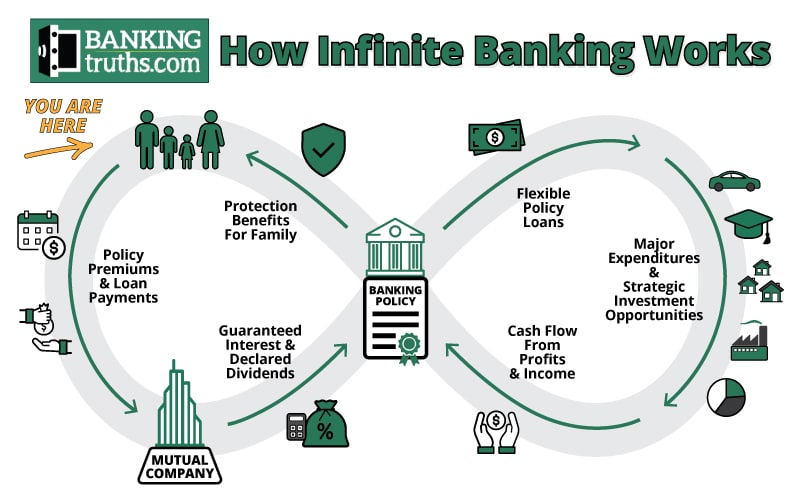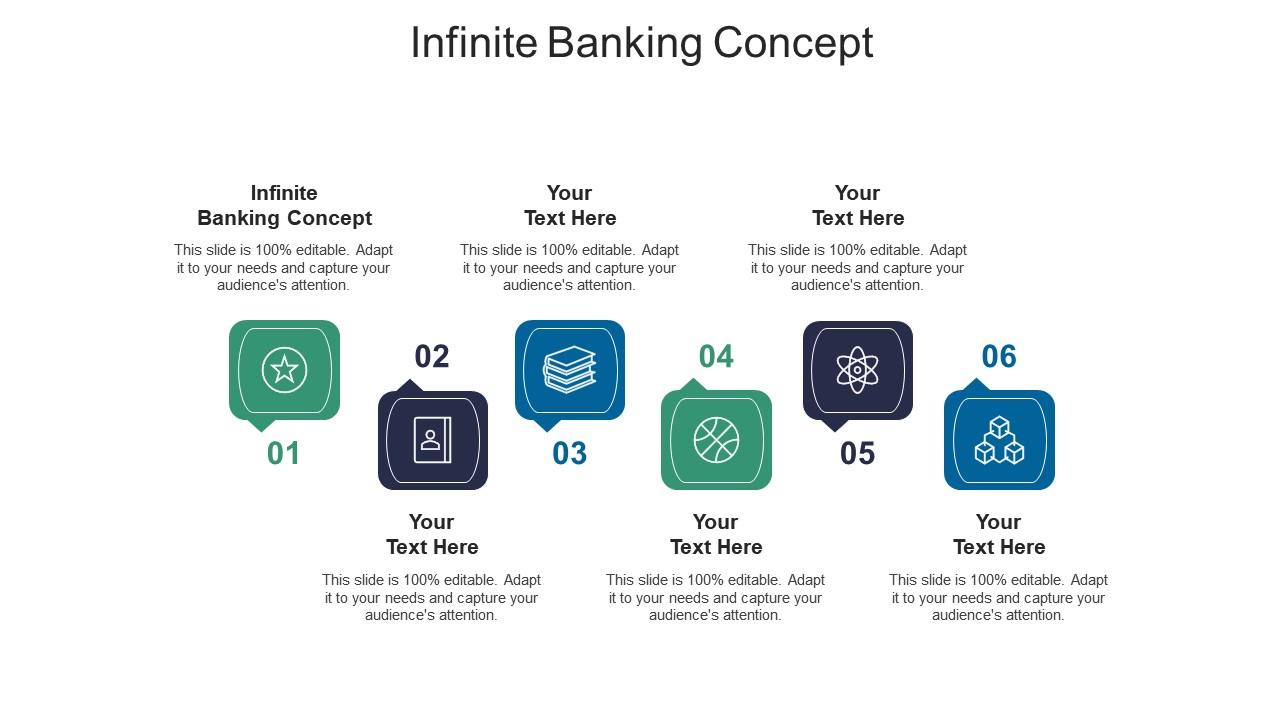All Categories
Featured
Table of Contents
Okay, to be fair you're actually "banking with an insurance coverage business" rather than "financial on yourself", but that principle is not as easy to offer. It's a bit like the concept of purchasing a house with cash money, then borrowing versus the residence and putting the money to function in another financial investment.
Some people like to speak regarding the "velocity of cash", which primarily implies the very same point. That does not indicate there is absolutely nothing rewarding to this idea once you get past the advertising.
The entire life insurance coverage sector is pestered by extremely costly insurance coverage, huge commissions, shady sales practices, low prices of return, and badly educated clients and salespeople. If you desire to "Financial institution on Yourself", you're going to have to wade right into this market and really buy whole life insurance. There is no replacement.
The warranties inherent in this item are vital to its function. You can obtain against most kinds of money value life insurance policy, but you shouldn't "financial institution" with them. As you buy a whole life insurance policy plan to "bank" with, keep in mind that this is a totally separate section of your financial strategy from the life insurance area.
As you will certainly see below, your "Infinite Financial" plan actually is not going to reliably offer this crucial monetary feature. An additional problem with the reality that IB/BOY/LEAP relies, at its core, on a whole life policy is that it can make getting a policy bothersome for numerous of those interested in doing so.
Public Bank Infinite
Dangerous hobbies such as SCUBA diving, rock climbing, sky diving, or flying also do not mix well with life insurance products. The IB/BOY/LEAP supporters (salespeople?) have a workaround for youbuy the policy on someone else! That may exercise fine, considering that the point of the plan is not the survivor benefit, yet bear in mind that getting a plan on small children is much more expensive than it needs to be because they are usually underwritten at a "typical" rate rather than a favored one.

Many plans are structured to do one of two things. Most commonly, policies are structured to take full advantage of the payment to the agent offering it. Negative? Yes. It's the truth. The payment on a whole life insurance plan is 50-110% of the very first year's costs. In some cases plans are structured to take full advantage of the survivor benefit for the premiums paid.
With an IB/BOY/LEAP policy, your objective is not to maximize the survivor benefit per dollar in premium paid. Your objective is to make the most of the cash money worth per buck in costs paid. The price of return on the policy is very crucial. Among the most effective means to make best use of that variable is to obtain as much cash money as feasible right into the policy.
The very best method to boost the rate of return of a plan is to have a reasonably small "base policy", and after that put even more cash money right into it with "paid-up additions". Rather of asking "How little can I place in to get a specific fatality advantage?" the concern ends up being "How much can I legitimately took into the plan?" With more cash in the policy, there is more money value left after the costs of the fatality advantage are paid.
A fringe benefit of a paid-up addition over a routine premium is that the compensation rate is lower (like 3-4% rather than 50-110%) on paid-up enhancements than the base policy. The much less you pay in compensation, the higher your rate of return. The price of return on your cash value is still going to be negative for some time, like all cash money worth insurance coverage.
A lot of insurance policy business just provide "straight recognition" car loans. With a direct recognition funding, if you borrow out $50K, the reward rate applied to the cash money worth each year only uses to the $150K left in the plan.
Infinite Bank Statements
With a non-direct acknowledgment car loan, the company still pays the very same returns, whether you have "borrowed the cash out" (practically versus) the plan or not. Crazy, right? Why would certainly they do that? That understands? They do. Frequently this attribute is coupled with some less valuable element of the policy, such as a lower returns price than you may get from a policy with straight acknowledgment finances (infinite banking uk).
The companies do not have a source of magic totally free money, so what they offer in one location in the policy should be extracted from another area. But if it is extracted from a function you care less around and take into a function you care extra around, that is a great thing for you.
There is another crucial feature, normally called "wash finances". While it is wonderful to still have actually returns paid on money you have gotten of the plan, you still have to pay interest on that finance. If the reward rate is 4% and the finance is billing 8%, you're not exactly coming out ahead.
With a clean funding, your funding rates of interest is the same as the reward price on the plan. So while you are paying 5% passion on the car loan, that passion is entirely balanced out by the 5% returns on the finance. In that respect, it acts just like you withdrew the cash from a bank account.

5%-5% = 0%-0%. Same exact same. Therefore, you are currently "banking on yourself." Without all three of these aspects, this plan simply is not going to work extremely well for IB/BOY/LEAP. The biggest issue with IB/BOY/LEAP is the people pressing it. Almost all of them stand to benefit from you buying into this idea.
There are several insurance coverage agents talking about IB/BOY/LEAP as a feature of whole life that are not in fact marketing policies with the necessary features to do it! The problem is that those who understand the concept best have a huge conflict of passion and generally blow up the advantages of the idea (and the underlying plan).
Rbc Private Banking Visa Infinite
You ought to compare loaning against your plan to taking out money from your interest-bearing account. Go back to the beginning. When you have nothing. No money in the bank. No money in investments. No cash in cash money value life insurance coverage. You are faced with a selection. You can place the cash in the bank, you can spend it, or you can buy an IB/BOY/LEAP plan.
It grows as the account pays rate of interest. You pay tax obligations on the rate of interest every year. When it comes time to get the watercraft, you withdraw the cash and acquire the boat. You can save some more money and put it back in the financial account to begin to gain interest again.
When it comes time to purchase the watercraft, you sell the investment and pay tax obligations on your long term capital gains. You can conserve some more cash and purchase some even more investments.
The cash worth not utilized to spend for insurance and compensations expands over the years at the returns price without tax obligation drag. It begins with unfavorable returns, but with any luck by year 5 or two has actually broken even and is growing at the returns price. When you go to purchase the watercraft, you obtain versus the plan tax-free.
Can I Be My Own Bank
As you pay it back, the money you repaid begins growing once again at the dividend price. Those all job quite in a similar way and you can contrast the after-tax prices of return. The fourth option, nonetheless, works extremely in a different way. You do not conserve any kind of money nor acquire any kind of financial investment for many years.
They run your credit rating and provide you a financing. You pay rate of interest on the borrowed money to the financial institution until the lending is repaid. When it is settled, you have a virtually useless boat and no money. As you can see, that is nothing like the first 3 choices.
Latest Posts
Life Insurance - Create Your Own Bank - Prevail
Start Your Own Bank Free
Infinite Banking Review